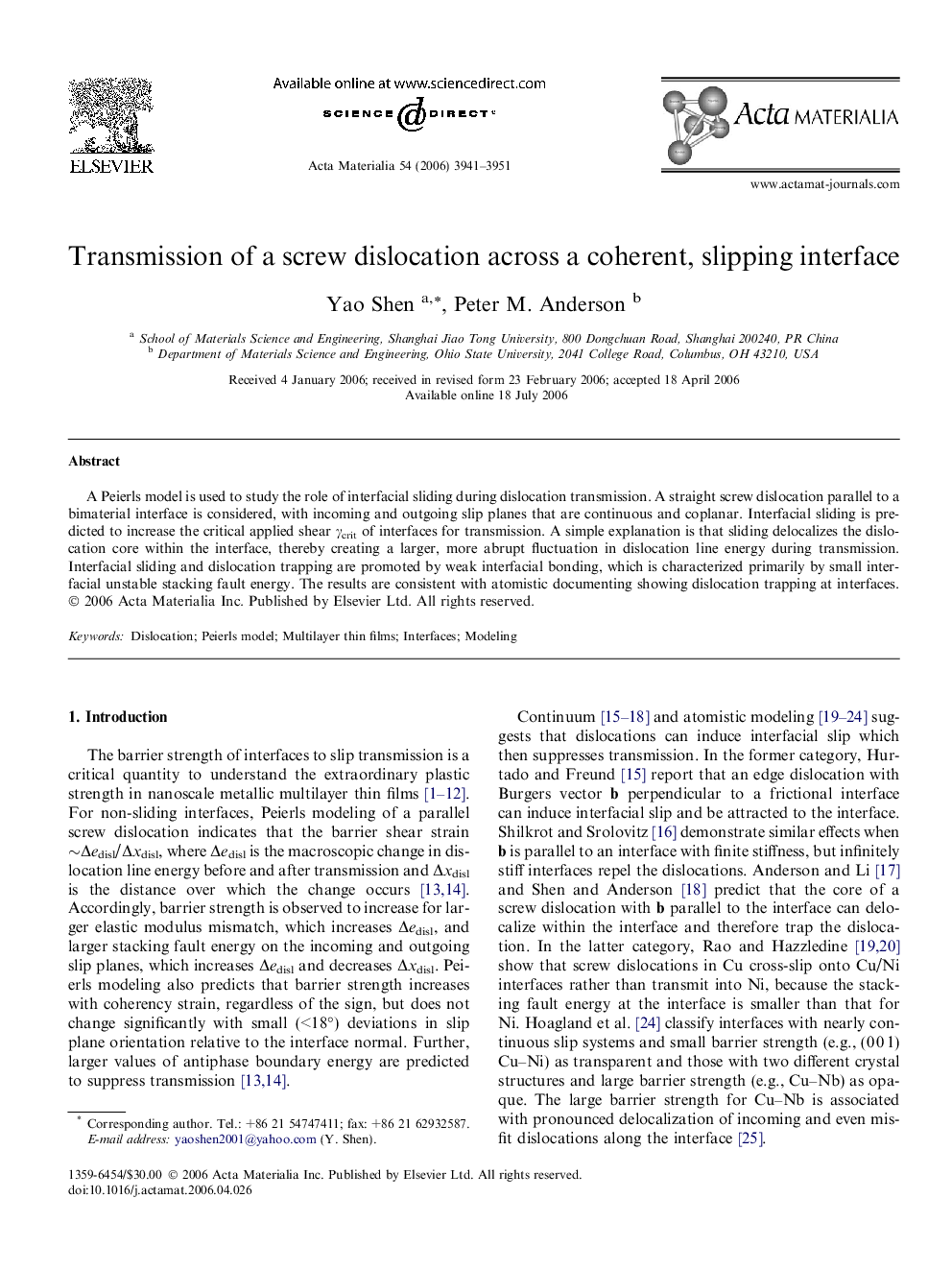| Article ID | Journal | Published Year | Pages | File Type |
|---|---|---|---|---|
| 1450387 | Acta Materialia | 2006 | 11 Pages |
A Peierls model is used to study the role of interfacial sliding during dislocation transmission. A straight screw dislocation parallel to a bimaterial interface is considered, with incoming and outgoing slip planes that are continuous and coplanar. Interfacial sliding is predicted to increase the critical applied shear γcrit of interfaces for transmission. A simple explanation is that sliding delocalizes the dislocation core within the interface, thereby creating a larger, more abrupt fluctuation in dislocation line energy during transmission. Interfacial sliding and dislocation trapping are promoted by weak interfacial bonding, which is characterized primarily by small interfacial unstable stacking fault energy. The results are consistent with atomistic documenting showing dislocation trapping at interfaces.
